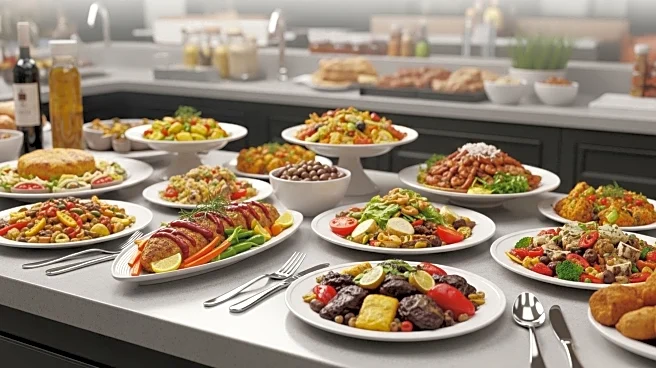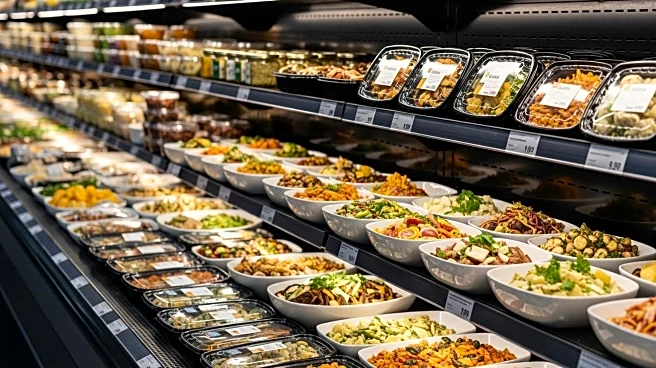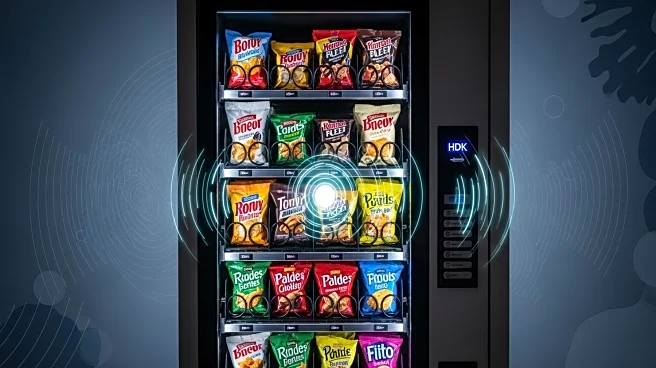What's Happening?
Grocery stores are increasingly becoming a go-to option for consumers seeking convenient meal solutions, as more shoppers opt for prepared foods over dining out. According to a report by the Food Industry Association (FMI), purchases of grocery foodservice
and prepared foods have grown, with $19.6 billion spent in the 52 weeks ending August 9, marking a 3.7% increase from the previous year. Nearly 64% of households reported purchasing prepared foods from grocery stores at least once during this period. The trend is driven by consumers' desire for convenience and affordability, as grocery stores offer a variety of high-end prepared foods that can be combined with regular grocery shopping. Fully cooked meats, pizza, and olives/marinated vegetables have seen significant sales increases, while lunchmeat and deli-prepared beverages have declined.
Why It's Important?
The shift towards grocery store-prepared meals reflects changing consumer preferences and impacts both the grocery and restaurant industries. As grocery stores enhance their offerings, they are increasingly competing with restaurants for consumer spending. This trend could lead to a reshaping of the foodservice landscape, with grocery stores capturing a larger share of the market traditionally dominated by restaurants. The convenience and cost-effectiveness of grocery-prepared meals appeal to various demographics, including hybrid workers, households with children, and Millennials, indicating a broad and sustained demand. This shift may also influence grocery store strategies, prompting them to expand their prepared food options and improve operational efficiencies to meet consumer expectations.
What's Next?
Grocery stores are likely to continue expanding their prepared meal offerings, focusing on variety and healthier options to cater to diverse consumer preferences. As the demand for convenience grows, stores may invest in technology and logistics to enhance their foodservice capabilities. Additionally, grocery stores might explore partnerships with local chefs or restaurants to offer exclusive meal options, further blurring the lines between grocery and restaurant experiences. The ongoing competition with restaurants could lead to innovative marketing strategies and promotions aimed at attracting more consumers to grocery-prepared meals.
Beyond the Headlines
The rise in grocery-prepared meals could have broader implications for food waste management, as stores strive to balance supply with demand to minimize shrinkage. This trend may also influence cultural dining habits, as consumers increasingly view grocery stores as viable alternatives to traditional dining experiences. Furthermore, the expansion of prepared meal options could impact local economies, with grocery stores potentially becoming significant contributors to the foodservice sector.













